

Ed Fries interview
By Scott Stilphen
(2015)

Although best known for his involvement with the MicroSoft XBOX console, Ed got his start in the video game industry years before, programming Atari 400/800 games for Romox. Now retired, he's back into game programming, only this time it's for the Atari VCS/2600!
Q: What inspired you to pursue a career in game design? Were there any programmers or games that inspired you?
Ed Fries: My mom got her Masters in Computer Science when I was in 6th grade, and I used to go with her and watch her submit her programs on stacks of punch cards. My dad is an Electrical Engineer, so he also had influence and would bring home programmable calculators from work for me to play with. It wasn’t until I got my Atari 800 for Christmas one year that I really fell in love with programming.
Q: How did the opportunity to work for Romox come about? When did you start there? Were they the first game company you worked for?
Ed Fries: I was a high school kid, working in a pizza place, going to school, and writing games for my Atari 800. I wrote a Frogger clone called Froggie and gave it to a few friends. It made its way around the bulletin boards until someone at Romox saw it. Somehow they tracked it back to me and offered me a job making games for them.
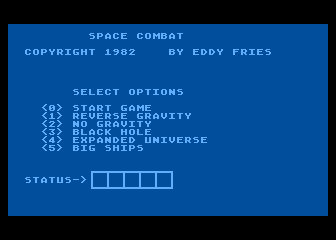
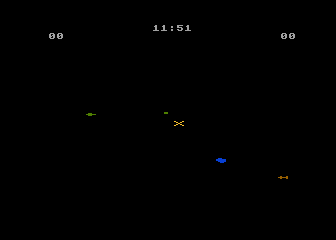
Q: You did 3 games for Romox that I know of: The Princess and the Frog, Ant-Eater, and Sea Chase. You also did a game called Space Combat. Was this ever published?
Ed Fries: Space Combat was a clone of Space Wars. It was my first Assembly language game. I submitted it to Atari's Program Exchange (APX). They sent back a nice note saying I needed to fix a few bugs before they would consider publishing it but I never did. Froggie became The Princess and the Frog.
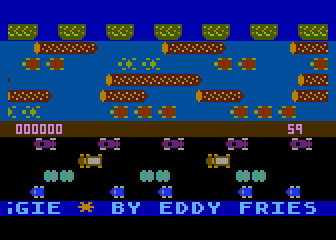
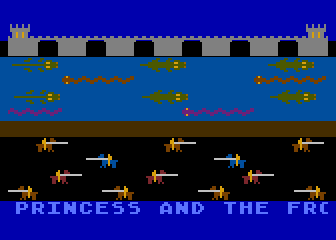
Q: Your Froggie game also appeared on a compilation called Arcade Bonanza that was released by a company called Keypunch Software...
Ed Fries: I first heard about this a few years ago. I never worked for them and this was done without my permission.
Q: Were there any other Atari 400/800 games you worked on?
Ed Fries: I wrote a bunch of games in BASIC before I started tackling Assembly language. I made a game that played the card game Gin called Comp-U-Foe that I would force my friends to play against. I made a robot wars type game where players created robots and programmed them in a kind of Assembly language and then battled them against each other. We had lots of fun with that one.
Q: Can you talk a bit about each of your games, as far as the inspiration behind each one, what the easiest/hardest part of designing each one was, the people you worked with on them, etc?
Ed Fries: When I worked for Romox, I mostly did what they asked me to do. They had a series of changes they wanted me to make to Froggie so they wouldn't get sued and I did those. For Ant-Eater, they sent me a hand-drawn sketch of what they wanted the screen to look like and a short description of gameplay, and I built the game based on that. Sea Chase was very similar. I would talk to them on the phone every once in a while if issues came up, but other than that I worked on my own. I was in college at the time, so friends from school would play-test my games while they were in development and give me suggestions.
Q: Did you work with any graphics or sound artists? If so, do you recall who helped with what?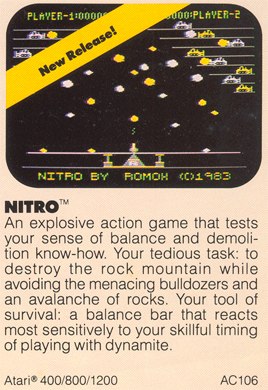
Ed Fries: No, I did all the graphics myself. I still have the graph paper notebooks where I would draw out the graphics and convert them into hex code to enter into the program. For music, I pretty much stuck to classical music that I converted from sheet music .
Q: With your games, were there any features you would have liked to added, or any known bugs or glitches that gave you trouble (or never got resolved)?
Ed Fries: Hmm, I don’t remember any. Princess and Frog was 4K so I had to squeeze it in there to fit it in the cartridge. The other two were 8K so I had a little more space.
Q: Do you remember what early or tentative titles your other games had (if any)?
Ed Fries: I think the names were the same during development.
Q: Were there any games or projects that you worked on that ultimately never got released or even finished?
Ed Fries: I had started to work on a game called Nitro when Romox (and most of the rest of the game industry) went away in 1984. I never finished it. It was kind of strange with a rotating shooter in the middle on the bottom trying to shoot bombs that were being pushed by bulldozers off platforms higher up the screen. I probably have a build on a floppy I should dig out one of these days. Not sure this game ever would have been much fun.
Q: Do you recall any other titles that other Romox programmers were working on that were never released, or finished?
Ed Fries: No. My only contact with Romox was through phone calls. I think I talked to a couple other programmers who did ports of my games to other machines, but I don’t really remember any details.
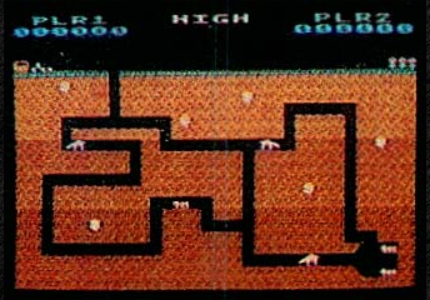
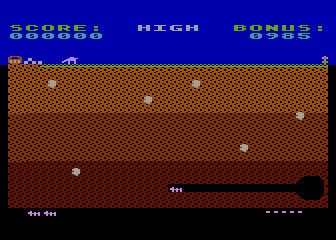
LEFT: Screenshot from Ant-Eater box; RIGHT: Screenshot from actual game
Q: According to Tim McGuinness, head of software publishing at Romox, a revised edition of Ant-Eater was developed, though it is unknown what the changes to the game were. The screenshot on both the box and cartridge label are possibly from this alternate version. Compared to an actual screenshot, it shows score counters for two players (“PLR1” and “PLR2”) whereas the original only shows “SCORE:” and “BONUS:”, for either a 1 or 2-player game. Also, apparently there’s a press release that mentioned the ability to choose your level but this isn’t an option in the released version. Do you recall anything about this?
Ed Fries: I have no memory of this, sorry. I suspect they did it on their own without my help
Q: Are there Easter eggs in any of your titles? Do you recall any fellow co-workers that did?
Ed Fries: Nope, sorry.
Q: Do you know if the Commodore VIC-20 and C-64 versions of Ant-Eater were ever released? Both the 1983 Romox catalog and magazine ads mentioned them. The only other version I know of is for the TI-99/4a.
Ed Fries: I didn’t do the porting work so I don’t know about this.
Q: Did you ever attend any industry shows, such as CES, Toy Fair, or E3?
Ed Fries: Not in the early days. I attended E3 starting with the second one in 1996 but that was much later.
Q: Did you work anywhere else prior to joining MicroSoft?
Ed Fries: I worked for a small business software company called StarCom in the summer of 1984. Their main product was a database called Files & Folders.
Q: From what I’ve read, you earned your B.S. in Computer Science from the New Mexico Institute of Mining and Technology in 1986. Did you start at MicroSoft right after that? How did that come about?
Ed Fries: Yes, I applied for a summer internship in 1985 and joined as a programmer in the Computer Based Training group. They liked the work I did and offered me a full time job when I graduated in 1986.
Q: You’re probably best known for your work at MicroSoft. You were the GM of games there for most of your 10-year tenure, and later became the VP of games publishing...
Ed Fries: I worked at MicroSoft for 18 years, from 1986 until 2004. I joined as the 7th member of the team creating the first version of Excel for Windows. I worked as a programmer and manager of programmers as the team grew over the next 5 years, eventually becoming “Technical Lead” or lead programmer for the project.
I moved over to Word about 1990/1991 to manage the development team and did that until 1995/1996 when I took over MicroSoft’s game group and ran it as a General Manager and later Vice President until I left in 2004.
Q: What were some of your experiences working in the game industry? Do you have any stories or anecdotes from those days that you relate?
Ed Fries: Hmm, too many stories… I traveled to Japan and met lots of amazing developers there: Yu Suzuki, Yuji Naka, and many others. I worked with Peter Molyneux and the Stamper Brothers from Rare in the UK. And, of course, I worked with pretty much every major U.S. game developer at some point. Really good times.
Q: Can you describe your career, between then and now, and where you’re currently working?
Ed Fries: I retired in 2004 and since then my main focus has been raising my two boys (now 11 and 13) but I continue to be pretty involved in the game business. I give talks at conferences from time to time. I have a little company called FigurePrints that makes 3-D color prints of World of Warcraft characters. I write games for the Atari VCS/2600. I was a co-founder of a game company called Airtight Games that made a several console games (Dark Void, Quantum Conundrum, Murder – Soul Suspect). I’m also an advisor or board member for lots of game related startups, so I keep pretty busy!
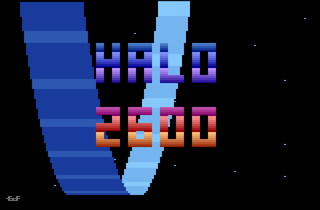

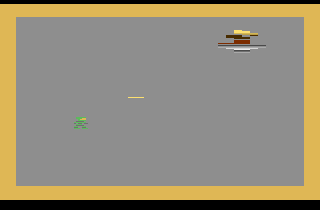
Q: You once stated your first VCS game, Halo 2600, originally started as a programming exercise. How long did it take you to program it? And of all games to port, why Halo? I admit when I first heard about it, I thought it was another hoax, similar to the VCS Doom game that was done years before.
Ed Fries: It took about 6 months to write the game from start to finish. I started around Christmas time (2009). I had just read the book, Racing the Beam, and wanted to try programming on the machine. I started working on Halo because I couldn’t think of anything better to do (of course, I’m the one who bought Bungie and moved them to Seattle to make the original Halo for Xbox, so I feel connected to the franchise). I wasn’t really serious about making the full game until I went to Game Developers Conference the following spring and ran into a group of retro-oriented friends, Mike Mika and Chris Charla. As a total coincidence, they happened to be standing there talking to Tod Frye! They introduced me to Tod and I said something like, “I’ve been playing around with a version of Halo for the 2600,” and they went crazy and told me I HAD to finish it. I enlisted them as play-testers and Mike Mika helped me with some of the sprites. They gave me the encouragement I needed to finish the game. It was released at Classic Gaming Expo that summer (2010).
Q: The game is very impressive for a first VCS effort and shows off some advanced tricks such as 3-color characters and an original method to avoid the HMOVE line side-effect. Other companies such as Activision and M Network triggered the glitch on every line, which effectively blacked out the screen area where the lines appear.
Ed Fries: When reading through some documentation, I noticed that it was possible to do an "early HMOVE", which involved storing to the HMOVE register a few clock cycles before the beginning of the scan line and that, in that case, it didn't act the way it was supposed to (things moved in a funny way). But, if you could do it exactly on the right cycle (cycle 74 in my case) then the black line wouldn't ever appear on the screen. I wrote a simple test program with ducks moving back-and-forth on the screen to prove to myself that I could compensate for the crazy behavior caused by this early HMOVE, make the ducks move as I wanted them to, and never have to see that ugly black line. That gave me the confidence to go back into my main kernel and implement the early HMOVE in Halo 2600 to get rid of the black lines for good.
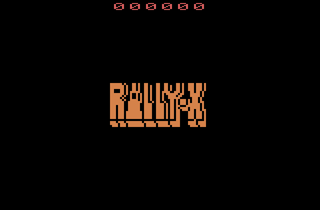
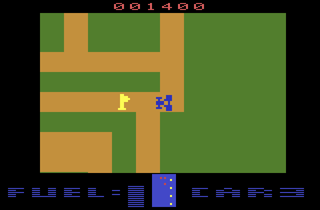
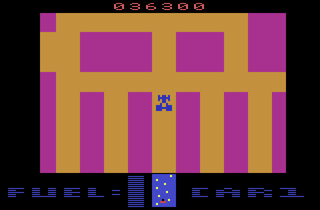
Q: Your next VCS game, Rally-X, is an excellent 4K port of the 1980 Namco classic. You started programming this in November 2013. Do you have any plans to release this on cartridge?
Ed Fries: I have discussed it with AtariAge. I need to clear up the rights with Namco and I need to fix a few more bugs. It’s been a real challenge to squeeze that game into 4K.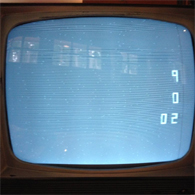
Q: You also recently restored a Computer Space arcade machine and wrote up a great article detailing your experiences with that. Any plans for restoring any more? You mentioned owning a Table Tennis and a Space Wars.
Ed Fries: I’m working on restoring a Space Wars right now. It would be nice to come full circle to my first Assembly game, Space Combat. So far it’s kicking my butt!
Q: Do you still own any of your old games for these systems, either as a keepsake, or to show friends or family?
Ed Fries: Yup, I have a bunch of NIB copies of Romox titles on my shelf.
Q: Which of your titles are your favorite, and what types of games in general? What’s your preferred platform for gaming?
Ed Fries: I play with my boys on all the platforms - mobile, consoles, handheld, and PC. I like lots of different things, but if I had to pick one genre it would be RPG. I’m getting too old for those twitch games, although I do have a pretty high-level character in Destiny. My favorite game from the old days is the Atari 800 classic M.U.L.E. and I play that with my boys sometimes.
Q: I know you’re in touch with Seamus Blackley. Have you stayed in touch with any of your former MicroSoft co-workers?
Ed Fries: I’m still in the Seattle area so I see people from the old days all the time. I’m always meeting with people at my local Starbucks, trying to help them start new game companies in our area.
Q: What are your thoughts on how the industry has evolved?
Ed Fries: I think it’s fantastic. There are markets for games big and small now. Anyone can be a game developer if they want to be, and anyone can publish their own game and hopefully find an audience for it.
| GAME | SYSTEM | COMPANY | STATUS |
| Comp-U-Foe | Atari 400/800 | none | not released |
| "robot wars" | Atari 400/800 | none | not released |
| Space Combat | Atari 400/800 | none | not released |
| Froggie | Atari 400/800 | none | not released |
| The Princess and the Frog | Atari 400/800 | Romox | released |
| Ant-Eater | Atari 400/800 | Romox | released |
| Sea Chase | Atari 400/800 | Romox | released |
| Nitro | Atari 400/800 | Romox | unfinished |
| Halo 2600 | Atari VCS/2600 | Atari Inc. | released |
| Rally-X | Atari VCS/2600 | Atari Inc. | not released |